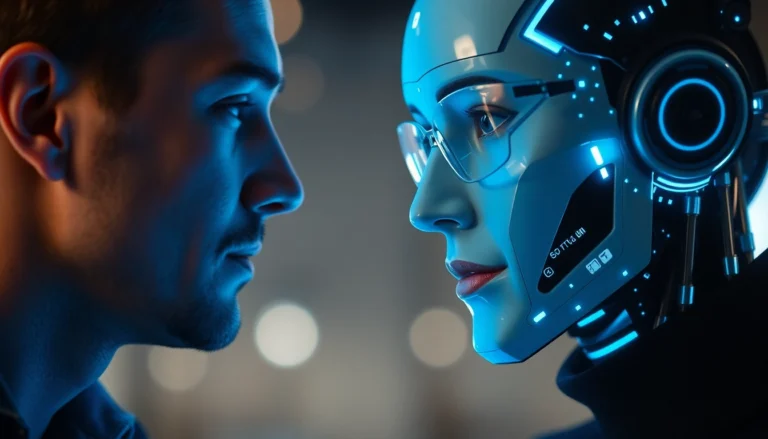Understanding the Human or Not Game
In an era where artificial intelligence (AI) continues to evolve at an unprecedented pace, distinguishing human responses from machine-generated ones has become both a challenge and a necessity. The human or not game stands as a cutting-edge social experiment and entertainment platform designed to test your perceptual and analytical skills. This interactive game invites participants to engage in a two-minute conversation with an anonymous entity—either a human or an AI—and determine who they are. Its purpose extends beyond mere amusement; it serves as a window into the capabilities of modern AI and our innate ability to perceive and interpret digital communication.
From a broader perspective, the human or not game is rooted in the classical Turing test concept, which posits that if a machine can convincingly imitate human responses, it challenges our understanding of consciousness and intelligence. However, unlike traditional Turing tests confined to AI researchers and academics, this social adaptation democratizes the experience, allowing anyone with internet access to participate and assess the nuance, complexity, and subtle cues that differentiate humans from AI bots.
How Does the Game Challenge Your Perception?
At its core, the game challenges your perceptual and cognitive faculties. During a confined two-minute chat, you’re tasked with analyzing responses for cues—linguistic patterns, emotional expressions, spontaneity, and subtleties that often distinguish human communication from machine replies. AI responses, while increasingly sophisticated, can sometimes reveal anomalies: overly formal language, repetitive phraseology, or subtle inconsistencies in tone and contextual understanding.
Recognizing these cues requires a blend of critical thinking, intuition, and familiarity with interaction patterns. For example, AI might struggle with nuanced humor, irony, or emotional depth that a human naturally conveys. Conversely, humans tend to sometimes become inconsistent, offer tangential remarks, or reveal unconscious biases—elements AI might not replicate authentically. The game essentially becomes a real-time test of your observational accuracy, forcing you to decipher the digital echoes of human authenticity or machine logic.
Historical Context and Development of the Game
The human or not game is a modern extension of the foundational Turing test formulated by Alan Turing in 1950. Originally designed to measure a machine’s ability to imitate human conversation convincingly, the Turing test has inspired countless variations and adaptations in the AI research community. Over time, as AI models like GPT-3 and GPT-4 have demonstrated increasingly human-like interactions, the need for a more accessible, engaging format led to the gamification of this challenge.
The current iteration was developed with advanced AI technologies at its foundation, aiming to bridge the gap between experimental AI and mass audience engagement. Powered by state-of-the-art language models—most notably GPT-4 among others—this game capitalizes on the latest in natural language processing (NLP). It combines the thrill of social interaction with rigorous AI detection testing, fostering public awareness about AI’s capabilities while offering an entertaining challenge.
Since its inception, the game has rapidly gained popularity, fueled by social media sharing, online communities, and its unique blend of entertainment and education. Its development journey reflects an ongoing quest in AI to imitate human spontaneity, and conversely, humanity’s curiosity about the machines we create.
Strategies to Improve Your Discerning Abilities
Recognizing AI Response Patterns and Nuances
In-depth familiarity with AI response patterns greatly enhances your detection skills. Common characteristics include:
- Repetition and Redundancy: AI may rephrase similar ideas or echo previous statements.
- Lack of Deep Contextual Awareness: AI might misinterpret nuanced references or cultural idioms.
- Over-Formal or Overly Polite Language: Responses tend to be grammatically correct but lack colloquial nuance.
- Absence of Genuine Emotional Variability: Responses may lack authentic emotional expression or subtle humor.
Using Critical Thinking and Intuition in Real-Time
Active listening is crucial. Focus on discrepancies, unusual phrase choices, or responses that seem overly generic. Trust your instincts—if something “feels” off, it warrants closer scrutiny. Consider asking unexpected or complex questions that require genuine emotional or experiential knowledge, which AI often struggles to emulate convincingly.
Common Signs of AI versus Human Communication
While no indicator is foolproof, common signs include:
- AI tends to avoid or struggle with questions requiring personal anecdotes or subjective opinions.
- Humans exhibit idiosyncrasies, emotional nuances, and sometimes minor inconsistencies.
- AI responses tend to be more structured, less spontaneous, and may lack the unpredictability found in human speech.
- Humans introduce humor, sarcasm, or cultural references nuanced beyond the AI’s training data.
Step-by-Step Guide to Playing Human or Not
Starting Your First Game: Setup and Rules
Playing the game is straightforward. Visit the official platform, which is fully responsive on desktop and mobile devices, and create a quick account if required. Once you initiate a conversation, you are paired with a peer—either a human or an AI—without knowing which. The game lasts precisely two minutes, after which you’ll be prompted to make your guess. There are no hidden costs; it’s free to play, making it accessible for everyone eager to test their perception skills.
Tips for Effective Observation During Conversations
To maximize your accuracy, employ active observation:
- Look for emotional depth or humor—humans are more likely to deploy nuanced emotional language.
- Notice response speed and variability—AI tends to answer more uniformly.
- Ask open-ended or subjective questions to generate more complex responses.
- Pay attention to grammatical consistency and idiomatic expressions—humans may make minor errors or slips that AI avoids.
Analyzing Results and Improving Your Accuracy
After each round, analyze your guesses in light of the actual responses. Keep track of patterns and your success rate. Over time, this builds an intuitive framework for recognizing subtle cues. Join community discussions, review cheat sheets, and study conversation samples to enhance your skills continuously.
Technological Foundations of Human or Not
AI Technologies Behind the Game (GPT-4, etc.)
The core of the human or not game leverages sophisticated AI models, primarily GPT-4, developed by OpenAI. These models have been trained on vast datasets encompassing diverse text sources—from literature and journalism to social media—enabling them to produce coherent, contextually relevant, and human-like responses. GPT-4’s nuanced understanding allows it to simulate conversational coherence, making detection increasingly challenging for players.
Other AI technologies involved include reinforcement learning from human feedback (RLHF) and advanced NLP techniques, which fine-tune the model’s ability to generate natural responses. The continuous evolution of these models means the game remains a robust challenge, constantly adapting to the latest AI capabilities.
Platform Architecture and User Safety Measures
The system architecture integrates cloud-based AI servers, real-time chat engines, and user interface frameworks such as Webflow and Amplitude for analytics. Ensuring user safety and privacy is paramount. Conversations are entirely anonymous, with strict adherence to data protection policies. End-to-end encryption and compliance with international privacy standards (such as GDPR) provide a secure environment for all participants.
Future Developments and Enhancing User Experience
Upcoming features aim to improve engagement, such as personalized difficulty levels, AI response explanations, and community leaderboards. There are also plans to incorporate more diverse AI models to elevate the realism of chatbot responses, which will intensify the challenge and educational value for players.
Enhancing Engagement and Community Participation
Joining the Conversation and Sharing Insights
The community surrounding human or not game thrives on shared experiences. Players are encouraged to discuss strategies, post interesting conversation snippets, and reflect on detection clues via forums or social media. These exchanges deepen understanding, improve perception skills, and foster a collective consciousness around AI development.
Utilizing Testimonials to Boost Your Skills
Listening to experienced players can offer valuable tips. For instance, Alex J., a frequent player, remarked, “After playing extensively, I noticed AI tends to avoid subjective questions, which can be a giveaway.” Such insights help newcomers refine their detection tactics.
Participating in Challenges and Community Events
Periodic tournaments, prediction challenges, and themed quizzes keep the experience dynamic. These initiatives promote active participation, allow players to benchmark their skills, and contribute to research on AI-human interaction patterns.







